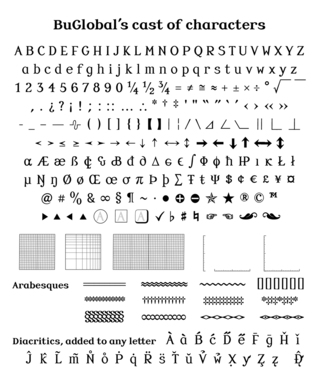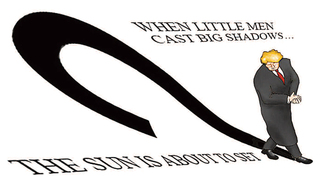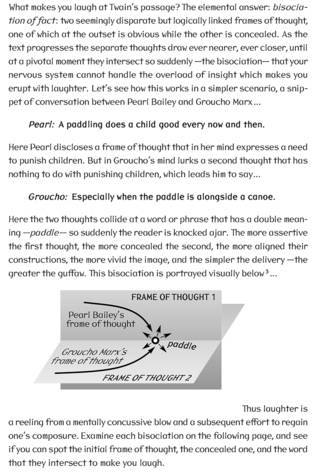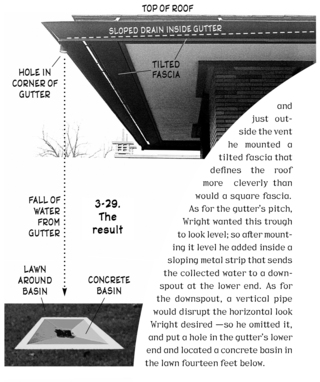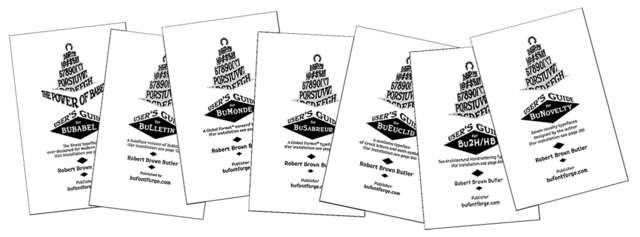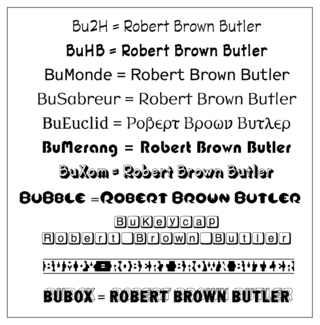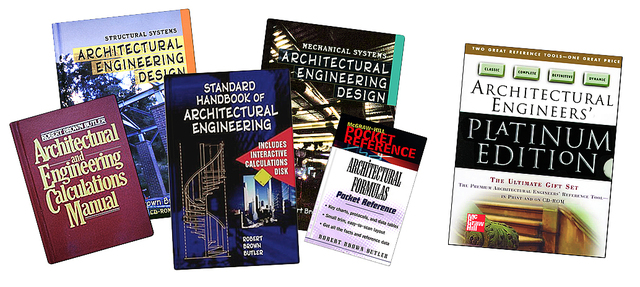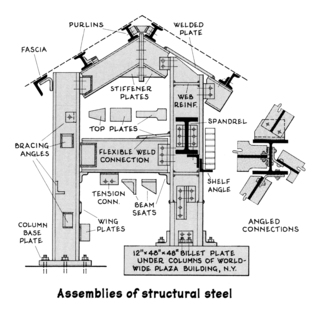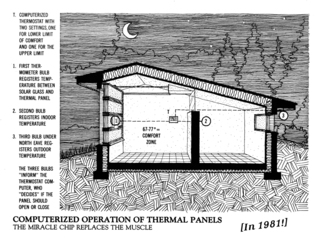BOOKS WRITTEN BY ROBERT BROWN BUTLER
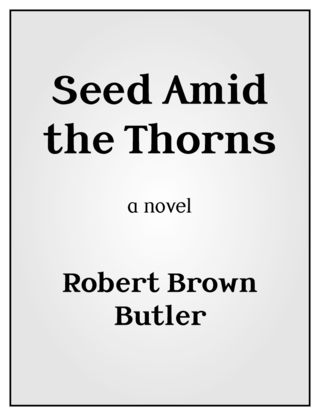
Seed Amid the Thorns © 2021, 104,000 words, 1 illustration
Here is a saga of the Sundering Sixties: how Kennedy's Peace Corps mission to "make the world a better place" was fractured by Johnson's Vietnam War into opposing factions that since have festered in our nation's marrow in a manner remindful of the fall of Rome. When young Gideon Gust, facing a miserable life in the derelict dells of his natal Appalachia, learns of a jungle paradise in Venezuela "where everything is perfect", he embarks on an overland odyssey that mirrors the aspirations of every disenchanted soul when something better calls elsewhere. With his windshield as a looking glass, he enters a world filled with lovers, drug dealers, con artists, insurrectionists, bullets, a timely nun, hopeless poverty one moment and ageless paradise the next, often amid the very alive ruins of an ancient civilization. His search, in which he discovers himself more than anything else, chronicles the social shaping of an Everyman that is relevant in any time on any soil.
Gideon's journey should appeal to anyone who enjoys a road story, a love story, a history of an era that profoundly influences our own, a story of how a despairing person finds his place in the world, and a novel that is inspiringly environmental —all in 104,000 words.
Due to its broad social and historical canvas, this novel resembles Steinbeck's epic, The Grapes of Wrath. You could call Gideon Gust the Tom Joad of southern Mexico. The novel also twins Cheryl Strayed's Wild in how it begins with Gideon's mother's death (same age, same killer) that sends him on his search (though he doesn't lose six toenails along the way). This work also has the makings of a major environmental novel since National Geographic, Jan 2016, page 2, said,"A new religion based on the environment could emerge in the next decade or two." This book does this today.
SELECTED PASSAGE
"… But many people in my country who try to find a better life in America are not as lucky as Eleanora and me. Many are captured, and beaten with clubs, and sent back if they are still alive, and some are shot, and some die of thirst in the desert."
"It seems so unfair somehow."
"Yes," Pablo sighs. "When you think that no one ever asked to be born, how can you punish someone for being something they can do nothing about? No one can change the color of one's skin or where one was born. To punish people like that is like beating up a crippled person."
"Ohh, that stabs deep."
"When someone treats another like this, the inflicter and the inflicted become less than two instead of more than two. Think about it. If one person hates another, not only do you lose the hating person because he is no longer helping, you lose the hated person because he becomes afraid to help. But if the same two people like each other, they can do four times more than each could do alone."
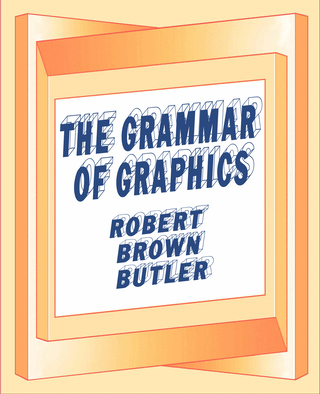
The Grammar of Graphics © 2021, 140 pages, 24,000 words, 175 illustrations
This eye-opening inquiry innovatively describes the elements of visual composition in a manner that is simple to grasp and encompasses the full range of visual phenomena. Its perceptual bedrock, firm as the physiology of your eyes, is that it describes nearly 60 visual axioms as crisply as theorems in a geometry book, and its examples include some of the finest art ever created. It is for anyone who is an artist, who works with artists, who simply enjoys looking at pretty pictures —and classrooms everywhere. As such this ocular adventure, in addition to inspiring visual aficionados of every kind, is a practical instrument that can increase your productive thinking in many ways, it can foster the important business of daily life, and it fulfills an established need in the affairs of society.
The book's seven chapters are:
1. Compose an area according to PERCEPTUAL LAWS OF COMPOSITION.
2. Create the illusion of depth on a flat surface with MONOCULAR DEPTH CUES.
3. Create the illusion of movement on a static surface with LINEAR MOTION CUES.
4. Liven a composition with CONTRASTS OF COLOR.
5. Compose a scene in terms of a particular ARTISTIC STYLE.
6. Dramatize a subject's nature with methods of VISUAL ELOCUTION.
7. Challenge conventional concepts of reality with VISUAL TRICKS.
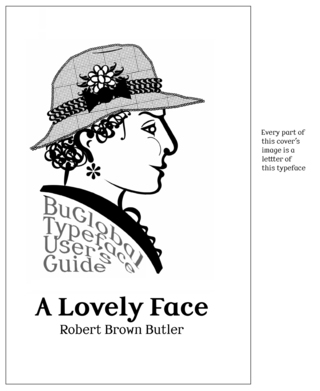
A Lovely Face ©2021, 116 pages, 22,000 words, 46 illustrations
Believe it or not, there is a better way to design computer typefaces, ones that are easier to use, more versatile, and beautiful as well. Consider BuGlobal. It is superior to standard computer typefaces because:
1. You can type eighty more characters that don't appear in standard computer typefaces. This includes every letter and every diacritic mark that appears in more than 80 English-variant languages worldwide. You can also type the diacritic marks and many already-existing characters more simply than in standard faces.
2. Its characters are aerodynamically easier to read and more restful on your eyes than those in other typefaces.
3. You can create dozens of fancy arabesques to make your typing look more attractive.
4. You do nothing different to install and use this typeface than you do with standard faces.
5. BuGlobal's user's guide, A Lovely Face, describes how to type each character and when to use them.
SELECTED PASSAGE
The next 46 pages is a gallery of BuGlobal's characters except the letters A–Z and numerals unless they have a feature not existing in standard faces. Each character is much enlarged so you can clearly see its shape, beside it are its Mac and PC keystrokes plus its Unicode number (a universal number assigned to each computer character that is the same in every typewritten language worldwide), and below appears a summary of the character's chief uses.
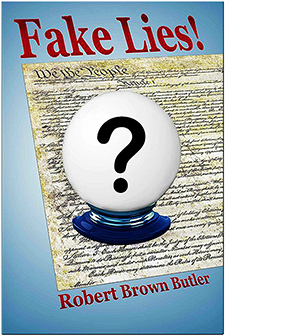
Fake Lies! © 2018, 168 pages, 7 political cartoons by the author
In a mystery the likes of which Agatha Christie would struggle to match, Hod Hawksbill, a retired journalist, limps on a cane that contains a powerful digital antenna that can record the President's Oval Office conversations from outside the White House. Lurking as a leaker par excellence, Hawksbill reveals how President Conan Cain uses his office to make billions of dollars, how he betrays our country to our most menacing global enemy, and how his closest allies grow to despise him and try to assassinate him —while Democracy totters as an innocent bystander. Hawksbill's ceaseless sleuthing steers our principled but perishable democracy from being ruled by a money-hungry despot and his corrupt cronies.
In this intimately immersive saga you will feel like you're a character in the story and are playing a supporting role in unfolding the plot. As the opaque becomes clear, this novel affirms that the freedoms spelt in our Constitution are more than desirable: they foster a prosperous comity in our citizenry. End these freedoms, and the prosperity Americans have known for decades will end.
Due to events that occurred near the end of Trump's administration, I intend to add more text to this novel. Hence, until further notice this literary work is unfinished.
SELECTED PASSAGE
“Here it is pertinent to ask, why is all this so relevant in light of the present debate? It is this, Mr. Boister. When faced with the tensions of the day, it is exceedingly difficult for one to imagine what life was like in this nation more than two long centuries ago, when our citizenry in the space of one decade became manacled by a repression administered from the far side of the Atlantic. When We the People finally said we have had enough, it took seven long dreadful years of bitter war to restore the freedom they once enjoyed. Imagine our citizenry today having to endure that same dreadful span of shackling and slaughter all over again! Here our forefathers had an advantage over us: They learned of freedom by having to endure its opposite. As such we do not know it so well, so we are not so aware of its benefits and what we would lose by its absence. But we can learn much of our forefathers' sufferings by reading their histories and experiencing by association how they struggled to replace the fright of repression with the joy of freedom. Then We the People of today may come to ask: Is the mere removal of one evildoer so small a price to pay to discourage years of horror involving millions of our numbers from happening again? This is what we servants of our citizenry have been deliberating for three seemingly long but in the great scheme of things three very short weeks. "So I end by saying to all of my esteemed colleagues seated in this august chamber: Several years of history may be condensed to a page in a book, but history is written every day, and today is one of its epochal days!”
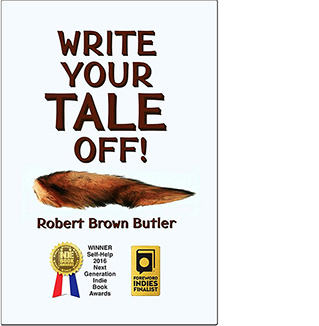
Write Your Tale Off!, © 2016, 204 pages, 6 illustrations
LOVERS OF WRITING, This handbook describes an exciting new way to write well: how to create fifty common literary devices whenever you want. In a manner analogous to how a carpenter would describe each tool he uses to build a sturdy chair, this book describes each literary tool you would use to build sturdy prose —and it does this so clearly that you will know when and how to use each device the instant your writing calls for it. Repeat this technique fifty times, and you have a literary tool box filled with such implements as … Increase Verb Density … Entertain with Humor … Create Suspense with Synecdoche … Inflate Meaning with Understatement … Add Meaning with Sentence Fragments … Paint Pictures with Words … Write Lively Dialog … and dozens more! Each lesson includes one or more passages by usually famous authors that exemplify how to use each literary device to greatest effect —and these passages alone are worth the book's price.
SELECTED PASSAGE
… From Entertain with Humor: See the sample page above.
REVIEWERS' ACCOLADES
This book should be in the hands of every Chairperson of English throughout the colleges and universities in this country and elsewhere.
… Dr. Joseph Maresca, Amazon Reviewer
This is one of the best guides for writing that I have come across, as useful to me as Stephen King's On Writing, Elmore Leonard's 10 Rules of Writing, William Zinsser's On Writing Well, and Sol Stein's Stein on Writing.
… Andy Anderson, Amazon Reviewer
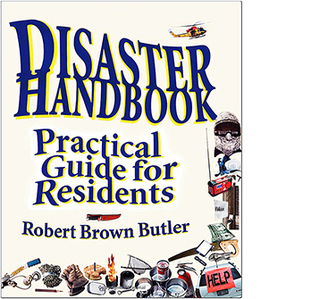
Disaster Handbook, © 2016, 216 pages, 179 illustrations
Here the delight of defeating a disaster awaits you . . . .
This lifesaving volume describes how to cope with more than twenty different kinds of disasters. It also addresses a disaster's biggest danger —which is not destruction but disruption. Death and damage may make the news, but usually far more lives are disrupted than destroyed. Witness the tornado that struck Joplin, Missouri, in 2011. In an area less than a mile wide and 22 miles long, 158 people died —but within thirty miles of this path of calamity, 120,000 citizens whose bodies and abodes were unscratched were profoundly disrupted by the carnage, loss of power, closed roads, and empty gas pumps and store shelves. Miles from the calamity's core, such deprivation and disorder can cause you to eat poisoned food, drink polluted water, become fatally infected from a small cut, live in total darkness between dusk and dawn, and be trapped by debris in every direction.
Hence this book, in addition to listing the vital foods, tools, and other "calamity commodities" you will need when misfortune comes knocking on your door, describes how to perform those everyday tasks that will keep you alive: How to cook, wash the dishes, clean your clothes, bathe, go to the bathroom, and keep everything sanitary when you have no power or pure water. These are the links that in times of peril form a chain of survival.
This book is also innovatively formatted into chronological sections titled Well Before, Days Before, Just Before, Suddenly, During, Just After, Well After, and Long After. These timeframes underlie how you psychologically confront any disaster and how you can best prepare for, endure, and recover from them.
This book further describes how to construct a strategic part of your home or workplace so in a disaster it will be nearly indestructible. For what use is it to have everything you would need in a time of peril if where you would keep and use it is destroyed? Hence this book, written by an architect, provides you with architectural drawings you can take to a professional designer or builder.
This book also insists that to overcome a disaster you needn't be young or strong. During two major disasters the author lived through, he performed many tasks appearing in these pages when he was past the age of seventy. Absent youth and strength, he exercised the kind of creativity and cleverness everyone has regardless of age, strength, or gender.
This book also declares that you do not need weapons, wilderness survival skills, or knowledge of hand-to-hand combat to live through a disaster. Instead it describes how to hue from the quarry of solid knowledge and energize your imagination in ways that will tilt the odds of danger from being forever against you to being always in your favor. When facing these challenges, far more citizens realize the need for friendship and teamwork and try to help each other, and would rather be known as Samaritans than Survivalists.
This book has won nine literary awards
SELECTED PASSAGE
Days before a disaster could arrive is when your brain's gearbox shifts from "neutral" to "forward". Here begins the countdown toward the moment of truth, when you will decide whether to barricade yourself in your abode and battle whatever forces may arrive, or whether to flee to a safer place.…
Regarding whether you should stay where you are or leave for a safer haven before an approaching disaster, you may not be able to make this vital decision during a period ranging from several days to mere hours before the crisis would strike. But this decision is only the first of several you may need to make depending on how a disaster may unfold and what damage it may cause. For example: If you stay, how will you cope? If you leave, where will you go? Even these decisions will depend on whether or not your abode is so damaged you can't stay, and if so whether you can leave or can't leave. The agony of all this is usually you must pass through this gauntlet of decisions when you don't have enough advance information to make the best choice. Make all the right decisions and you're safe —make one wrong decision and you could die. For these reasons, these vital leave or stay logistics, and what they indicate you should do concerning the choices you may have as the disaster unfolds, are the essential subject of the next seventy pages of this book.
REVIEWERS' ACCOLADES
I've read literally dozens of books on the topic, and without doubt, Robert Butler's 214 page guide is the best, most realistic, most experienced step-by-step guide to anticipating, surviving and recovering from a wide range of natural disasters I've ever read. As an architect he naturally addresses protecting and preparing your home, because if your home and your gear survive, you will survive. This book is instantly accessible by topic, in-depth but not dense, is easy to follow as an emergency first aid manual, and incredibly comprehensive.
... GB, Amazon Reviewer
Robert Butler approaches disaster preparation with a tremendous amount of practical skill and logic, breaking preparations down by time frames: Well Before, Days Before, Just Before, Suddenly, During, Just After and Well After. His advice on all fronts is terrific.
... D. Buxman, Amazon Reviewer
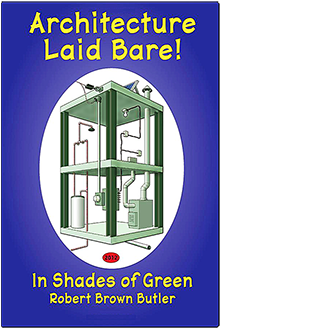
Architecture Laid Bare! In Shades of Green, © 2013, 458 pages, 232 illustrations
With this 456-page Britannica in hand, you will borrow the brains of one of America's foremost authorities on architecture in ways that will make your interior life more comfortable, economical, and trouble-free. With every roof you live and work under, this thick book will help you fix old problems, keep everything running smoothly, and fend off future problems before they occur. Among dozens of other ideas, you will know how to make a room smaller and more comfortable at the same time, how to choose the best lighting for each interior you inhabit, how to make your home or workplace safe from fire and other dangers —and instead of feeling subservient to architects and contractors, you will rule them. This volume further explains what green architecture is; hence its subtitle is In Shades of Green. As such this publication describes how to harness solar, wind, and other natural energies that may be around your house, and how our society can best achieve a sustainable architecture in today's ecologically ravaged world
The drawing above shows how Frank Lloyd Wright ingeniously designed some of his houses' roofs to shed rainwater without using gutters.
SELECTED PASSAGE
Another tip for owners about to embark on any construction project, large or small, is to keep a Book of Entries. This is a record of every material delivered and every hour of work performed, as suggested in figure 2-11. If you can't obtain the listed information from the contractor, insist, if you can, that s/he keep a similar record for the project, and insist, if you can, to be allowed to examine it when you want. Better yet, you keep such a record and have the contractor keep one, and compare them occasionally, perhaps during weekly conferences. This is one of the most thorough ways an owner can show an interest, keep informed, be involved, and have the confidence to assert oneself when necessary. Also if any construction or legal dispute arises, you can present before a judge a record of all that transpired.
REVIEWERS' ACCOLADES
Architecture Laid Bare is more than just a great book for demystifying the entire architecture process for the layman. Butler writes in a convivial, conversational style that makes even the most technical passages easy to digest. He also peppers the text with anecdotes and stories of his colorful and exciting life. These stories help illustrate the concepts and techniques Butler discusses, but also make for entertaining reading all on their own. Also filled with detailed illustrations and fascinating photographs, this is as complete a book on architecture as you could ever want, whether you own a home or not!
... AVB_NY
Architecture Laid Bare is a testimony to the highest standards of journalism, home construction, and brutal honesty. For example, I was shocked to know about the high amount of formaldehyde in new pressed wood products in new homes. I also found Butler's advice ingenious for new home owners. Additionally, I loved the section on Acoustics and the suggestions for eliminating sound in an outdoor area. I highly recommend Architecture Laid Bare to every homeowner who wants to have a healthy home, save money, and live a green lifestyle.
... Luv2Read, Amazon Reviewer
Seven Typeface Guidebooks, © 2004
TITLES OF BOOKS
1. The Power of Babel: Typeface User's Guide for BuBabel, © 2004, 98 pages.
2. BuLletin Typeface User's Guide: A Headline Version of BuBabel, © 2004, 56 pages.
3. BuSabreur Typeface User's Guide: A Serif Typeface, © 2004, 82 pages.
4. BuMonde Typeface User's Guide: A Sanserif Typeface, © 2004, 84 pages.
5. BuEuclid Typeface User's Guide: A Greek Letter/Math Symbol Typeface, © 2004, 88 pages.
6. Bu2H/HB Typeface User's Guide for Bu2H & BuHB, Two Architectural Hand-Lettering Typefaces, © 2004, 88 pages.
7. BuNovelty Typeface User's Guide, Seven Novelty Typefaces, © 2004, 32 pages.
During my earliest architectural days, whether in college drafting rooms or commercial offices, every plan I drew was blanketed with notes in which every letter and symbol was drawn by hand —my hand. Drafting these atoms of communication roused in me a fascination with how their hair-thin lines could evoke the subtlest cerebrations of anyone who would read them. Whether scribed with pencils or pens, their lines of text engendered in my mind an enduring fascination with typography.
Several decades later came computers, which supplanted lettering by hand with lettering by keys. Beginning in the late 1990s with my authoring five thick books on architectural engineering for McGraw-Hill, I designed their computer typefaces, which required creating an entirely different format for these typefaces that contained all the math and science letters and symbols that appeared in these technical books. After they were published, I used my newly developed computer typeface format as the basis for designing several typefaces that I used for everything when I chaired my hands before my keys. Since these typefaces included many more useful keys than appears in standard computer typefaces, in order to easily recall my crafted ciphers' strokes and uses, I wrote seven thin guidebooks that described what they were like and when to use them.
SOME TYPEFACES DESIGNED BY the AUTHOR
Five Books on Architectural Engineering for McGraw-Hill, © 1985–2002, 3,580 pages in all, including 1,432 drawings, 3,680 computerized formulas, and 412 tables, all prepared by the author
TITLES OF BOOKS
1. Architectural and Engineering Calculations Manual, © 1985, 464 pages.
2. Standard Handbook of Architectural Engineering, © 1998, 1,070 pages.
3. Architectural Engineering Design: Structural Systems, © 2002, 722 pages.
4. Architectural Engineering Design: Mechanical Systems, © 2002, 812 pages.
5. Architectural Formulas Pocket Reference, © 2002, 514 pages.
6. Architectural Engineers' Platinum Edition includes the entire Standard Handbook of Architectural Engineering in both print and electronic formats plus a CD of more than 900 computerized formulas.
These references enable architects, designers, engineers, and contractors to select and size virtually every functional component (beams, columns, pipes, wires, ducts, and so forth) that exists in almost any building from shed to skyscraper anywhere in the world. Each thick volume bulges with hundreds of informative ink drawings, tables, graphs, and schedules; they include chapters on design, structure, climate control, plumbing, electricity, illumination, and acoustics; and the text for each component describes the essential criteria for its design, gives the formulas, and explains each unknown. Best of all, volumes 2, 3, and 4 include computerized disks that enable a user to solve each equation with lightning speed. With this instant consultant in hand, no longer will you need to perform tedious calculations, refer to shelves of other texts, or relearn subjects forgotten long ago —and you'll do a day's work in an hour.
SELECTED PASSAGE
… This volume introduces you to two fundamentally new approaches toward the sizing of functional components. The first is parameter design. This involves determining the optimal dimensions of a component's outermost characteristics regardless of its inner details in a way that lets you move quickly on to other matters that may be affected by the component's size. For example, take the design of reinforced concrete T-beams. If you plan to use this structure, yet do not have the time or desire to size and space every rebar and attend to numerous other relevant inner details but need to know the beam's size right away so you can move on to other things, with this volume you can quickly 'parameter design' the beam's outer dimensions to create a 'void block' in the architecture, then forget about this component from here on; then later, an engineering specialist may size the member's inner minutiae within the parameters of its void block in a way that will not force you or anyone else to change anything later on.
REVIEWERS' ACCOLADES
Of Volume 1: An amazing book! For a nearly pocket-size book it is incredible how much it covers —everything from sizing bolts in a beam connection to escalator capacities. I would often try to think of things it might not cover only to be pleasantly surprised when it did cover them.
... Stephen Martinson, Amazon Reviewer
Of Volume 2: Excellent resource for professionals who need ready access to common architectural design issues. Provides excellent empirical techniques not available in academic texts. Real time saver.
... Johnny Elliott, Amazon Reviewer
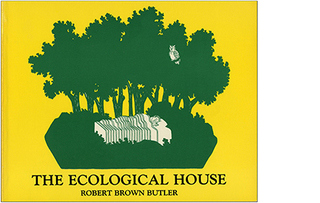
The Ecological House, © 1981, 226 pages, 109 full-page ink drawings
The Ecological House is a practical and philosophical tour de force, a thought-provoking and possibly lifesaving book, with a multitude of new and environmentally imaginative solutions to the diverse and interrelated problems of housing. This lively, topical, dramatically illustrated, and often poetic book will substantially enhance your quality of domestic living —from locating a house most advantageously on its site, to designing its interior spaces most efficiently, to enclosing its spaces with economical and durable materials, to minimizing the energy that would keep you comfortable year-round. Here is everything you ever wanted to know about the house you may dream of having at an affordable cost in these environmentally challenging times.
SELECTED PASSAGE
In this country, every square mile of city requires approximately 49 square miles of wilderness to purify its water, recycle its air, absorb its wastes, moderate its climate, and provide a substantial portion of its food and fiber needs without economic cost of human management. Even in suburban areas, the ratio is about 1 to 17. Thus as we destroy wilderness, we not only reduce our future opportunities to prosper, we degrade what we have already created.
REVIEWERS' ACCOLADES
I found [The Ecological House] to be way ahead of its time as to its ideas on building environmentally sound houses and its analysis of the differing activities of each room. This brilliant rethinking of the purpose of the various rooms was notable. I was most impressed that his thinking enabled him to divide the multipurpose “living room” into smaller “formal, passive, and active” centers that were much more efficient. The numerous drawings it contained were most helpful in illustrating the author's very important ideas on designing for the most efficient and money-saving ways to build homes, including locating the house to deal with differing climates, constructions that modified extremes of weather, and original ideas on size and layout of contents of individual rooms. This book should be in the libraries of every serious “green” enthusiast. Like I said, it was WAY ahead of its time.
... Beth Caldwell, Amazon Reviewer
As early as 1981 there were books like Robert Butler's The Ecological House, but they were isolated efforts that predated any broad sense of eco-friendly architecture.
... From Green House, Stang & Hawthorne, © 2005, Princeton Press

